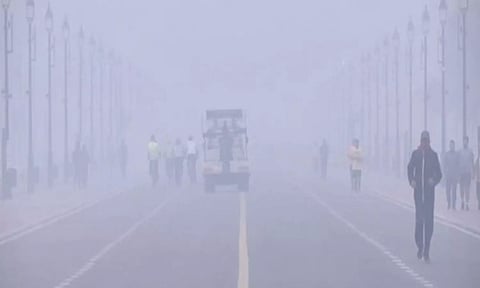

NEW DELHI: The air pollution in the national capital continues to be in the 'very poor' category, with an overall Air Quality Index (AQI) recording of 393.
As per the official data recorded at 7:00 am on Sunday, an AQI of 433 was recorded at Ananad Vihar and 434 at Ashok Vihar.
Similarly, the AQI at Bawana stood at 437, while Jahangirpuri registered an AQI of 450, all falling into the severe category.
The AQI at the ITO in Delhi was recorded at 382 (very poor), while the IGI airport logged an AQI of 360 (very poor).
The Air Quality Index from 0 to 100 is considered 'good', 100 to 200 'moderate', 200 to 300 'poor', 300 to 400 'very poor' and from 400 to 500 or above 'severe'.
Following a significant improvement in the overall AQI in the national capital last week, the CAQM (Commission for Air Quality Management) revoked the restrictions that were imposed under GRAP 4, permitting trucks and buses except for BS-3 and BS-4 petrol and diesel vehicles to enter the city and lifting the ban on ongoing construction activities. Restrictions under stages 1 to 3 of the Graded Response Action Plan (GRAP), however, remained in place.
Delhi Environment Minister Gopal Rai conducted a meeting on Friday on increasing pollution in the city.
"Some increase in the pollution of Delhi has been noted. We had a meeting regarding it. The incidents of stubble burning are very few now, and the level of pollution is still increasing. Scientists reported 2-3 factors for this. The first is that vehicle pollution's contribution is 36 percent. The second factor is biomass burning. We made some major decisions after seeing this," Gopal Rai said.
"To control vehicle pollution, we issued the rules of GRAP 3. To control biomass burning, we have directed the related organisations to monitor this, especially. especially the MCD, Revenue, DDA, and NDMC, are being given this direction for the fires that are breaking out at various places in the parks," he added.